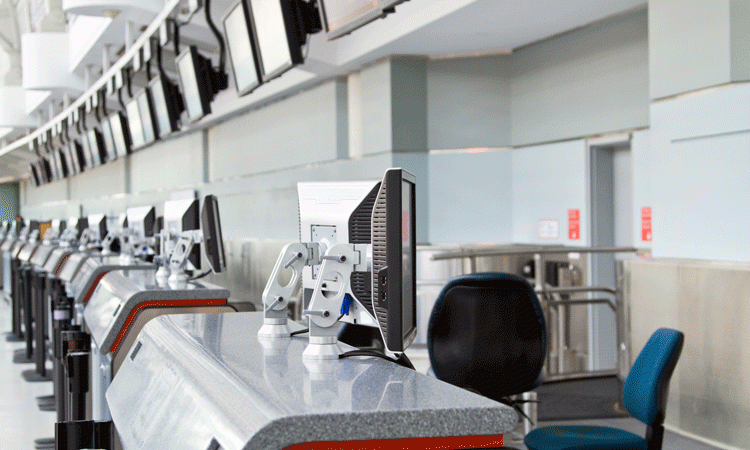A modern airport requires a future-ready technology strategy
- Like
- Digg
- Del
- Tumblr
- VKontakte
- Buffer
- Love This
- Odnoklassniki
- Meneame
- Blogger
- Amazon
- Yahoo Mail
- Gmail
- AOL
- Newsvine
- HackerNews
- Evernote
- MySpace
- Mail.ru
- Viadeo
- Line
- Comments
- Yummly
- SMS
- Viber
- Telegram
- Subscribe
- Skype
- Facebook Messenger
- Kakao
- LiveJournal
- Yammer
- Edgar
- Fintel
- Mix
- Instapaper
- Copy Link
Posted: 16 September 2019 | Martin Boyer - GTAA, Tara Nolan (International Airport Review) | No comments yet
The GTAA has been involved in many technology projects that have significantly changed the future of airport operations and passenger experience. It is now time for other airports to implement the suggested strategies.


All airports are aware of the need to evolve, particularly in terms of technology, infrastructure and airport processes. However, for some, the best way to tackle this is still unclear.
Martin Boyer, CIO at Greater Toronto Airport Authority (GTAA), spoke to Tara Nolan about the opportunities that arise when an airport creates a future-ready technology strategy, and the best way to secure this.
What do you believe a future-ready technology strategy for airports should include?
A future-ready technology strategy must be tightly coupled with the overall business strategy. The technology strategy should not be separate but instead developed to enable the business strategy. It should also provide for a nimble IT organisation that is able to quickly deploy technology and adjust to the changing needs of the business. Similarly, the strategy must be flexible enough to be able to take advantage of new technology when it becomes available.
A future-ready technology strategy should embrace innovation in order to quickly find out what works, what does not and move on. An innovative mindset will help the organisation determine which technologies are appropriate for the business in the short term and predict which technology has the potential to make a long-term impact.
The technology strategy must include an adaptable infrastructure upon which existing and future technology can be deployed, leveraging the cloud where possible. It must also include the infrastructure required to capture data, make sense of the information and drive actionable insights to improve the way the airport operates.
Finally, a future-ready technology strategy must include collaboration with the various stakeholders in the industry, working together to predict the future potential of technologies in order to best meet the needs of our passengers.
What are the biggest challenges in regard to implementing this strategy?
One of the biggest challenges we face is as an industry is the many different stakeholders that are involved, including airport authorities, airlines, government agencies and industry associations. This can make alignment across the industry a challenge given the different perspectives, priorities and responsibilities. However, this also provides an exciting opportunity for us to work together to try new and innovative technologies, evaluate business value and determine the benefit to our passengers.
The presence of various interested stakeholders also creates a challenge with the sharing of information. Both from a technical perspective in terms of the format and method to share the information, but also from a privacy standpoint, ensuring we collectively protect sensitive information as it changes hands and is used for multiple purposes.
Another challenge we face is related to our physical infrastructure. When planning for new airport facilities or renovating existing ones, it is critical that we anticipate the type of technology that might be deployed in the future. However, the future is not always clear. Building flexibility into the design of the facility helps to ensure the construction is agile enough to incorporate new technology that did not exist during the planning phase. Since technology tends to change more quickly than strategic plans, the challenge is to be able to predict the IT infrastructure that will be required to support new technology.
Martin Boyer participated in a CIO Panel Discussion at Airport IT & Security 2019, in which the role of technology within a modern airport was debated, alongside the potential for a different, technology-driven role for airports in the aviation sector.
To what extent is technology imperative for the success of an airport?
In order to be competitive, technology needs to be leveraged to the greatest extent possible. Passengers have ever-increasing expectations when it comes to airports and the ability to effortlessly flow through the various processes seamlessly and without delay. Taking advantage of technology to facilitate this flow has become table stakes. The focus then turns to the passenger experience, working to ensure we provide a connected, personalised experience. Those airports that capitalise on both the operational efficiencies though technology, while at the same time enhancing the passenger experience, will be more successful.
How has the Greater Toronto Airports Authority seen technology affect airports?
Given the importance of information sharing, we are in the midst of launching Airport Collaborative Decision Making (A-CDM) to ensure the right information is shared with the right stakeholders at the right time. This will result in improved airside operations and the optimisation of the aircraft turnaround process.
We recently launched our new TorontoPearson.com website which gives passengers easy access to the most important information on their journey. We are also upgrading our digital screens in the terminals to ensure passengers have access to the information they need during their travels.
Alongside this, data management is a priority and we are finishing a project to launch a new enterprise-wide data management platform to allow for the sharing of information across the organisation. This data can then drive better decision making and allows for new insights to be developed and actioned.
How do you believe airport processes will change in the future?
Airport processes will become much less transactional and technology will allow for the seamless flow of passengers throughout their entire journey. For example, facial recognition coupled with complementary technologies will allow passengers to move through airport processes without delay, while still maintaining safety and security. For example, check-in and subsequent identification checks will be completed through biometrics as passengers walk through the facility.
Ultimately there should not be any perceptible touchpoints for a passenger as they arrive at the airport and make their way to the boarding area. At the same time, the experience can be much more personalised, taking into account and catering to a passenger’s travel habits such as lounge access or promotions at their favourite airport coffee shop.
Technology is the key enabler to new processes which serve to optimise the operational efficiency of an airport, while at the same time providing the necessary platform to deploy programmes aimed at maximising the passenger experience.
Biography
Martin Boyer joined the GTAA in August of 2014 and most recently led the Project Management Office for Desjardins General Insurance in Lévis, Quebec. Prior to Desjardins, Boyer held numerous positions throughout his 26-year career with Air Canada, including the overall leadership major corporate programmes leading to the implementation of Air Canada’s new generation of operational systems and the introduction of the B787 fleet. He also held the position of General Manager, Customer Service for Eastern Canada and Vice President Operations Destina, an Air Canada’s subsidiary operating AirCanada.com.
Airport IT & Security 2019 brought together CIOs, Directors and Heads of Operations and Security from the world’s major international airports and regional hubs. Keep an eye out for the conference next year!


















